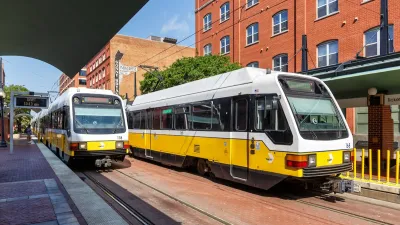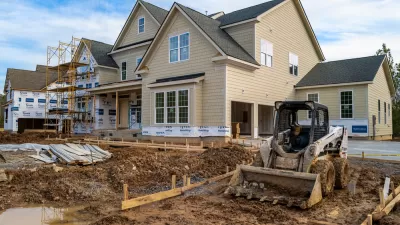NIMBYism served a purpose once, says Scott Doyon, preventing all sorts of heinous projects from being built. But eventually, it became about stopping ALL change. Doyon has some recommendations for changing course.
Scott says that redirecting NIMBYs is firstly about regaining trust:
"You don't have to be a dyed in the wool treehugger, preservationist ideologue or evangelical New Urbanist to acknowledge that, more often than not, the past fifty years of growth and development has resulted in a downward trade. That is, what we've built has been inferior to whatever was lost."
So given that, why should locals trust the development process at all? Doyon explains that there are developers and city planners doing excellent work now and NIMBYs need to learn to "cowboy up and accept that that person is now your ally. Not your enemy."
Thanks to Hazel Borys
FULL STORY: NIMBY Nation: Mad as hell and I don’t blame ‘em. For now.

Study: Maui’s Plan to Convert Vacation Rentals to Long-Term Housing Could Cause Nearly $1 Billion Economic Loss
The plan would reduce visitor accommodation by 25,% resulting in 1,900 jobs lost.

North Texas Transit Leaders Tout Benefits of TOD for Growing Region
At a summit focused on transit-oriented development, policymakers discussed how North Texas’ expanded light rail system can serve as a tool for economic growth.

Why Should We Subsidize Public Transportation?
Many public transit agencies face financial stress due to rising costs, declining fare revenue, and declining subsidies. Transit advocates must provide a strong business case for increasing public transit funding.

How to Make US Trains Faster
Changes to boarding platforms and a switch to electric trains could improve U.S. passenger rail service without the added cost of high-speed rail.

Columbia’s Revitalized ‘Loop’ Is a Hub for Local Entrepreneurs
A focus on small businesses is helping a commercial corridor in Columbia, Missouri thrive.

Invasive Insect Threatens Minnesota’s Ash Forests
The Emerald Ash Borer is a rapidly spreading invasive pest threatening Minnesota’s ash trees, and homeowners are encouraged to plant diverse replacement species, avoid moving ash firewood, and monitor for signs of infestation.
Urban Design for Planners 1: Software Tools
This six-course series explores essential urban design concepts using open source software and equips planners with the tools they need to participate fully in the urban design process.
Planning for Universal Design
Learn the tools for implementing Universal Design in planning regulations.
Ascent Environmental
Borough of Carlisle
Institute for Housing and Urban Development Studies (IHS)
City of Grandview
Harvard GSD Executive Education
Toledo-Lucas County Plan Commissions
Salt Lake City
NYU Wagner Graduate School of Public Service





























